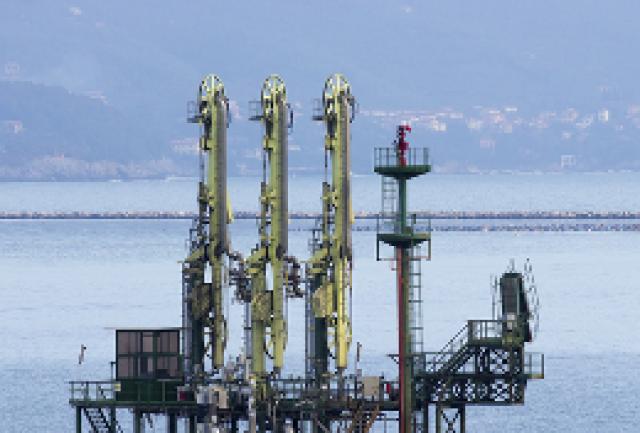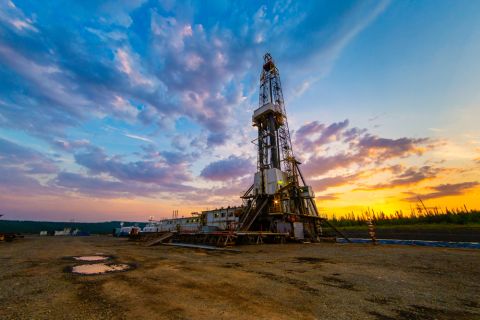
An abundance of natural gas resources has positioned the US to become a major energy exporter to parts of the world with anticipated high energy demands, and some companies are stepping up to the task by planning to boost liquefaction capacity or expand existing operations.
However, politics may stand in the way of progress on the federal government’s end this year, according to David Bloom, a partner at Mayer Brown. Speaking during a webinar, called “How LNG Is Transforming The Global Energy Market: What You Need To Know – US Developments,” Bloom said the Department of Energy (DOE) delayed releasing its report on natural gas exports.
“We know that we have enough gas to participate in the market. We know that we have the demand to take the gas from US markets. And we know that we have the companies that are lined up to both supply the gas to these projects and to build the very, very large and expensive infrastructure as well as the customers to take the LNG from the US to overseas markets,” Bloom said. “So why isn’t it happening?”
The short answer is regulation, and Bloom predicted action won’t come until after the November election and no sooner than early 2013.
“The Obama administration does not want this to be a front-burner issue,” said Bloom. “The Romney campaign has not made it an issue partially because some of the manufacturing base that supports the Romney campaign wants to see low natural gas pricing.”
And when progress is made, all of the applications awaiting approval for LNG export projects most likely won’t be approved by the DOE because of nervousness about the long-term viability of production, Bloom said.
Still, companies are moving forward with their plans, considering bountiful production of natural gas and natural gas liquids from shale plays in the US market. Cheniere Energy has two of the three US LNG-related projects mentioned during the webinar that have filed with the DOE and Federal Energy Regulatory Commission. The company’s Sabine Pass liquefaction project would have a capacity of 2.2 Bcf/d, and its Corpus Christ liquefaction project would have a 1.8 Bcf/d capacity, said Renato Pereria, Cheniere’s vice president of origination. The other project, Freeport LNG’s expansion, would bring a capacity of 2.8 Bcf/d.
Using as example production from six US shale plays – Barnett, Woodford, Fayetteville, Haynesville, Eagle Ford and Marcellus – Pereia pointed out that production jumped from 3.6 Bcf/d in 2007 to 24.4 Bcf/d in 2012.
“Supply is plentiful in the US and will continue to be plentiful. Even with low gas prices, supply will continue to increase,” Pereia said.
Good news is that there is an anticipated demand for LNG. By 2019, a visible gap will emerge on the demand side, widening until 2025, Pereia’s presentation revealed. Most of the demand will come from Asia, specifically China and India. The regional LNG import outlook for Asia is 192 MMmt/y by 2015 and 310 MMmt/y by 2030, compared to Europe’s 87 MMmt/y by 2014 and 152 MMmt/y by 2030.
“The global demand for LNG is today at record highs with Asia accounting for nearly 60% of the global demand,” said Jose Valera, a partner with Mayer Brown. “Global demand for natural gas is expected to further expand significantly as more nations adopt incrementally cleaner fuels to meet future economic growth and prioritize alternatives to minimize the impact of increasing oil-based energy costs.”
Calling LNG the fast-growing component of the natural gas market, Valera said LNG shipments have grown by more than 22%. “For countries that like indigenous natural gas resources or are simply not self-sufficient, LNG represents a rapid and cost-effective means of introducing natural gas into the local fuel mix. Currently, there are 25 LNG importing countries.”
The largest suppliers are expected to be Australia and Qatar, he said.
However, there are several attributes that makes the US a potential game changer. For one, development of unconventional gas has been so robust that it pushed down prices, outpacing the demand. That speaks to why Bill Wince, vice president of transportation and business development for Chesapeake Energy Marketing Inc., believes US shale development can support both gas demand here and abroad.
Another advantage the US has over other countries is its transportation network.
“I think that’s important because our competitors have to develop the LNG export facility, the pipeline facility, and oil and gas reserves to deliver an LNG product to the world,” Wince said. “In the United States, all of those resources are already developed for us, and we have a number of different (regasification) facilities on the Gulf Coast and East Coast that can easily be turned around.”
However, Wince pointed out that although natural gas production has grown dramatically since 2005 (going from just less than 200,000 boe/d in 2005 to about 475,000 boe/d in 2012 for Chesapeake), low gas prices have triggered a shift to liquids.
The top 20 natural gas producers reduced rigs dedicated to gas by 50%, going from 464 on Jan. 1, 2010, to 233 on July 27, 2012, Wince’s figures showed. Overall, producers dropped natural gas rigs from 804 to 451, a 44% drop, for the same time period. At the same time, companies increased the number of rigs dedicated to liquids-based activity. The top 20 producers’ rigs for such activity surged 673%, going from 15 to 116. Overall, total producers increased liquids-based activity rigs to 1,409 from 375, a 276% increase.
Contact the author, Velda Addison, at vaddison@hartenergy.com.
Recommended Reading
Drilling Tech Rides a Wave
2024-01-30 - Can new designs, automation and aerospace inspiration boost drilling results?
Tech Trends: Autonomous Drone Aims to Disrupt Subsea Inspection
2024-01-30 - The partners in the project are working to usher in a new era of inspection efficiencies.
TGS, SLB to Conduct Engagement Phase 5 in GoM
2024-02-05 - TGS and SLB’s seventh program within the joint venture involves the acquisition of 157 Outer Continental Shelf blocks.
2023-2025 Subsea Tieback Round-Up
2024-02-06 - Here's a look at subsea tieback projects across the globe. The first in a two-part series, this report highlights some of the subsea tiebacks scheduled to be online by 2025.
StimStixx, Hunting Titan Partner on Well Perforation, Acidizing
2024-02-07 - The strategic partnership between StimStixx Technologies and Hunting Titan will increase well treatments and reduce costs, the companies said.





